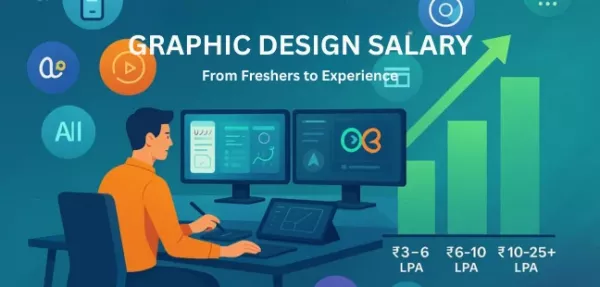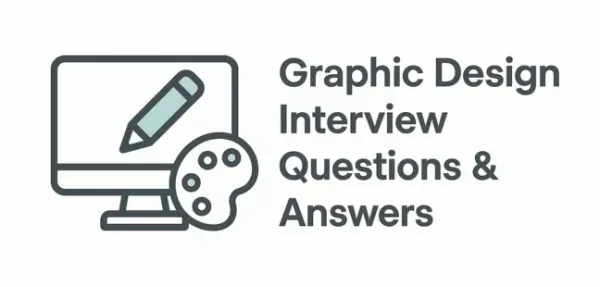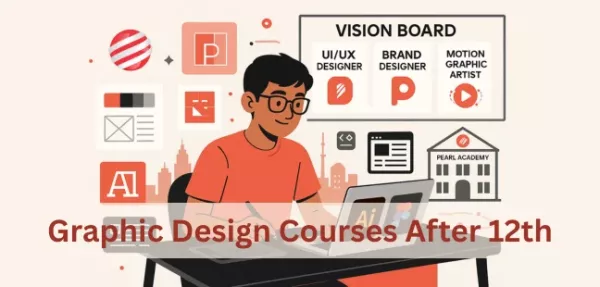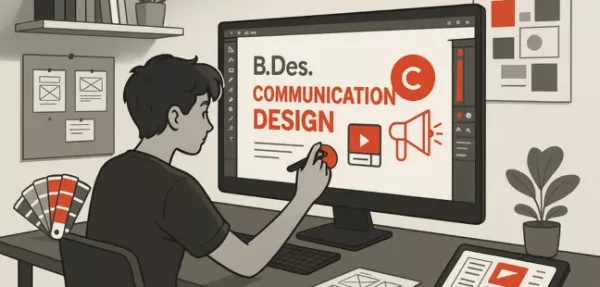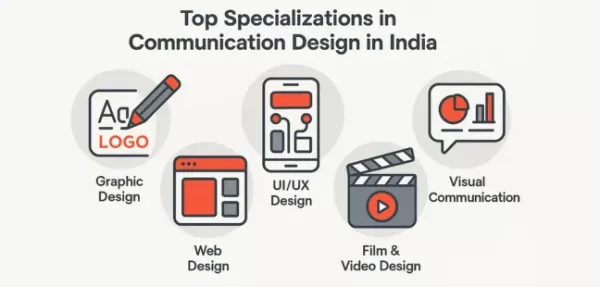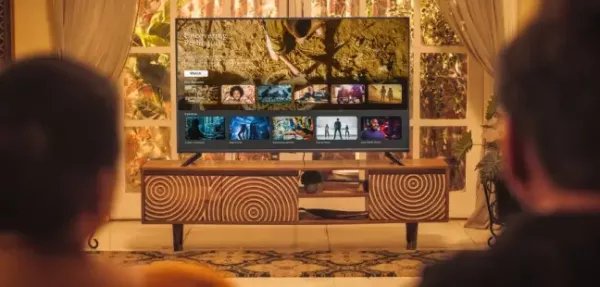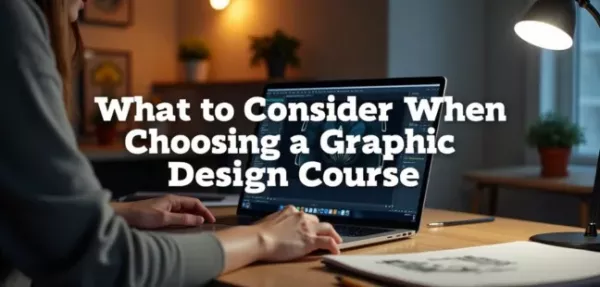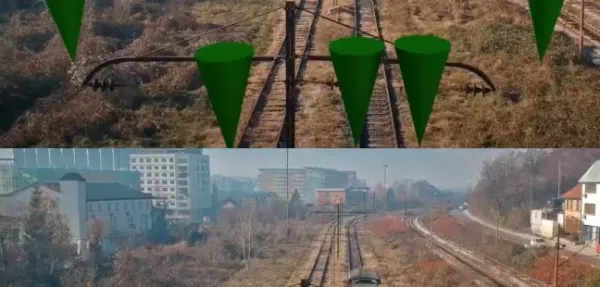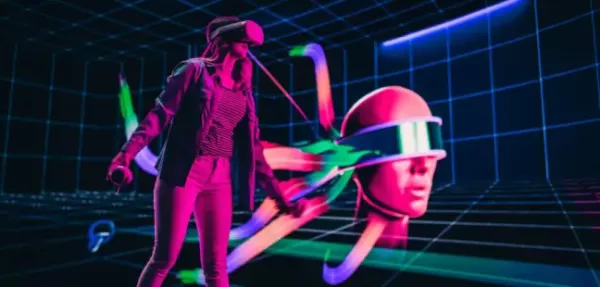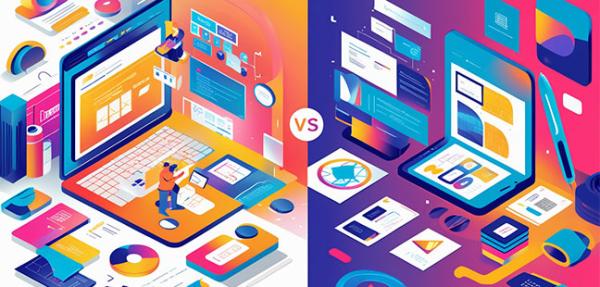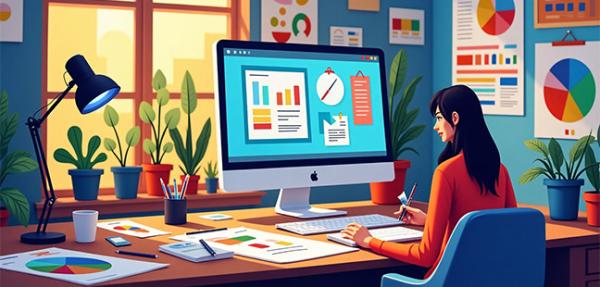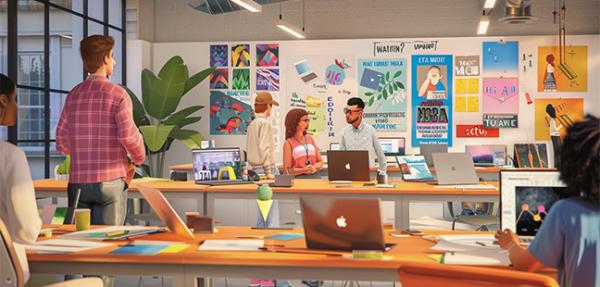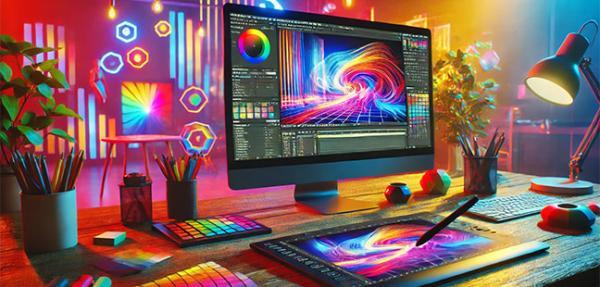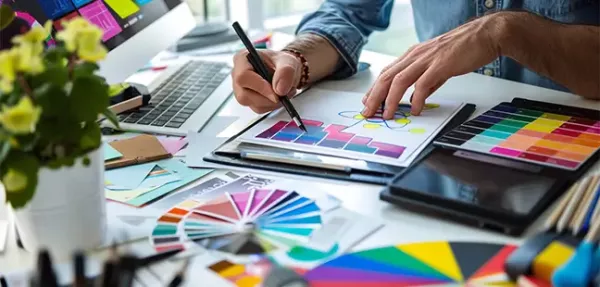5 Key Differences: Visual Communication vs Graphic Design
- Editorial Team
- Published 22-Jan-2025
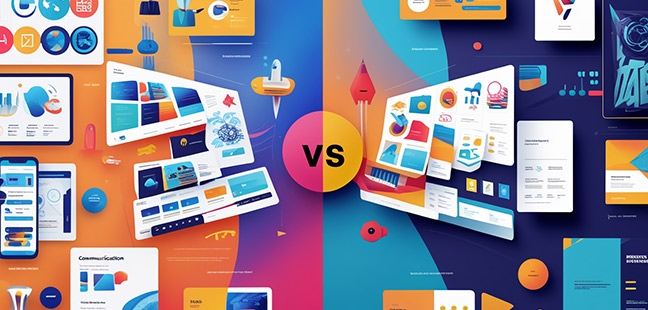
In today’s world, where visuals dominate how we consume information, visual communication and graphic design play pivotal roles in shaping effective messaging. While these two fields often overlap, they are distinct disciplines with unique purposes, processes, and career paths.
While graphic design concentrates on providing accurate visuals like logos or posters, etc., visual design is concerned with developing cohesive and captivating designs for things, experiences, and environments. In general, both graphic and visual designs use visual aspects to express ideas and messages.
In this blog, we’ll dive into what is visual communication and what is graphic design, highlight their similarities, explore the major differences, discuss career opportunities, and debunk common misconceptions about these creative fields.
Become future-ready with our Communication Design Programs
Know MoreWhat Is Visual Communication?
Visual communication is the art of conveying ideas and information through visual elements. It uses tools such as images, videos, charts, and symbols to make complex ideas easy to understand. Visual communication design is all about arranging visual elements like images, text, colors, and shapes to share information or ideas in a way that's clear and appealing. Think of a poster, a website, or even a road sign—they all rely on visual communication design to get their message across effectively. The goal is to make it easy for people to understand and appreciate what they see.
Key Principles of Visual Communication Design
| Design Principle | Description | Example |
| Clarity | The message should be easy to understand. | A road sign with a bold arrow and clear text like "Turn Left" ensures drivers quickly get the message. |
| Hierarchy | Design elements should guide the viewer's attention to the most important information first. | A movie poster might have the film’s title in big, bold letters at the top, while other details like the release date and cast are smaller but noticeable. |
| Typography | The style and arrangement of text should make it easy to read and match the message's tone. | A movie poster might have the film’s title in big, bold letters at the top, while other details like the release date and cast are smaller but noticeable. |
| Color Theory | Colors can set the mood and create a connection with a brand. | A movie poster might have the film’s title in big, bold letters at the top, while other details like the release date and cast are smaller but noticeable. |
| Layout and Composition | All elements should be arranged in a balanced and harmonious way. | A magazine cover might place the main headline in the center and supporting text around it to draw focus without looking cluttered. |
| Layout and Composition | Keeping the design style uniform helps build trust and recognition. | Apple’s advertisements always use sleek, minimal designs, making their brand instantly recognizable. |
Why Visual Communication Design Stands Out
Visual communication design combines skills from different areas like art, psychology, and technology to create visuals that tell a story or deliver a message. For instance:
Typography is more than just letters—it can set the tone. Bold, uppercase letters in a warning sign like “CAUTION” emphasize urgency, while a soft cursive font on a wedding invitation feels elegant and romantic.
Color Theory impacts emotions and perceptions. A hospital might use calming blues and greens in their branding to create a sense of trust and tranquility.
Skills Required for Visual Communication
To excel in Visual Communication, you'll need:
- Creativity: A strong eye for aesthetics and design.
- Attention to Detail: The ability to notice small but impactful changes in visuals.
- Software Proficiency: Knowledge of design tools like Adobe Illustrator, Photoshop, and InDesign.
- Communication Skills: Translating complex information into simple visual forms.
Everyday Examples of Visual Communication Design
| Scenario | Purpose | Technique |
| Traffic Lights | Communicate stop, caution, and go | Use red, yellow, and green—universal signals everyone understands |
| Social Media Ads | Guide viewers to take the next step | Eye-catching visuals with clear calls to action like “Shop Now” or “Learn More” |
| Restaurant Menus | Make specific items stand out | Highlight “Chef’s Specials” with larger fonts or bright colors |
Visual communication design is everywhere, shaping how we navigate the world and understand the messages around us. By using these principles effectively, designers create visuals that not only look good but also communicate powerfully. It helps to bridge language barriers and enhance understanding in a visually driven world.
What is Graphic Design?
Graphic design focuses on creating visually appealing and functional designs for print and digital media. It combines typography, imagery, and layout to communicate messages effectively. Graphic design is a creative and balanced way of visual storytelling. Imagine you're an architect designing a house, carefully choosing the right materials, colours, and layout to create an appealing and functional home. Likewise, graphic designers meticulously select and arrange various visual elements to create a compelling design that conveys an idea.
Graphic Design Meaning and Examples
- What is Graphic Designing: It involves designing logos, brochures, websites, and advertisements to capture attention and convey specific messages.
- Art Graphic Design Examples: Branding materials like business cards, banners, and product packaging. Much like the iconic golden arches of McDonald's. People all around the world easily remember and identify the company just by glimpsing those golden arches. Not only this, but the sense of association is also so strong we’re instantly reminded of the brand whenever we see similar arches, whether on a highway sign, or a shrub trimmed in a similar way. The design has become synonymous with the brand itself.
For more on the career paths and opportunities in visual communication and graphic design, see our detailed breakdown in the career insights post.
5 Key Differences: Visual Communication vs Graphic Design
The main difference between graphic design and visual communication design lies in their focus and scope.
Graphic design is a part of visual communication that deals with creating visual content for specific purposes, like marketing, branding, or communication. Graphic designers typically create visual assets such as logos, brochures, posters, and illustrations. Their work requires strong skills in typography, branding, and image editing. For example, a graphic designer might design a company logo or create a flyer for a product launch.
Visual communication design, on the other hand, covers a broader range. It focuses on conveying complex ideas and messages through various mediums. This field goes beyond creating visuals—it involves storytelling, organizing information, and designing for user experiences. Visual communication designers work on projects like infographics, user interface (UI) design, and data visualizations. These projects require a deeper understanding of how information is structured and how users interact with it.
| Aspect | Visual Communication | Graphic Design |
| Definition | Focuses on the overall strategy of communicating visually. | Focuses on creating specific visual outputs like posters or logos. |
| Scope | Includes multimedia, videos, and interactive visuals. | Primarily involves print and digital static designs. |
| Purpose | Aims to educate, inform, or inspire using visuals. | Aims to attract attention and promote products or services. |
| Skills Required | Strong storytelling and analytical skills. | Aims to attract attention and promote products or services. |
| Outcome | Holistic communication strategy through visuals. | Creation of standalone design elements for specific purposes. |
In short, while graphic design focuses on creating individual visual elements, visual communication design takes a bigger-picture approach, using a wide range of tools and techniques to communicate ideas effectively across different platforms. Both fields share similar foundational skills, but visual communication demands a broader skill set to address more complex challenges.
Similarities Between Visual Communication and Graphic Design
While Visual communication is the beating heart of a brand's identity, graphic design is responsible for elevating visual communication, making it a crucial component in effectively conveying information and ideas to a diverse and visually driven audience.
- Creative Fields: Both rely on creativity and aesthetic principles.
- Visual Media: They use elements like typography, colors, and imagery to communicate.
- Message-Oriented: Both aim to convey a message to a target audience effectively.
- Technology Integration: Use of tools like Adobe Photoshop, Illustrator, and Canva is common in both fields.
- Collaboration: Both involve working with teams, clients, and other creatives.

Student Guidance Center: Our Counselors are Just a Click Away.
Conclusion
In summary, while both graphic design and visual communication design share foundational skills and principles, they serve different purposes and require varying levels of expertise. Graphic design focuses on creating specific visual assets like logos, brochures, and illustrations to achieve clear objectives such as branding or marketing. Visual communication design, however, takes a broader approach, using storytelling, information hierarchy, and interactive elements to convey complex ideas across diverse mediums.
Ultimately, the choice between these fields depends on your interests and career goals. If you enjoy crafting precise visual elements, graphic design might be your path. But if you're drawn to combining design with strategic thinking and communication across multiple platforms, visual communication design offers a more expansive and multidisciplinary opportunity. Both fields are essential to how we communicate in today's visually driven world and mastering either can lead to a fulfilling and impactful career.
Tags
- #Communication Design
Pearl Admission Enquiry
Subscribe to Pearl Blogs
By clicking the "Subscribe" button, I agree and accept the privacy policy of Pearl Academy.









